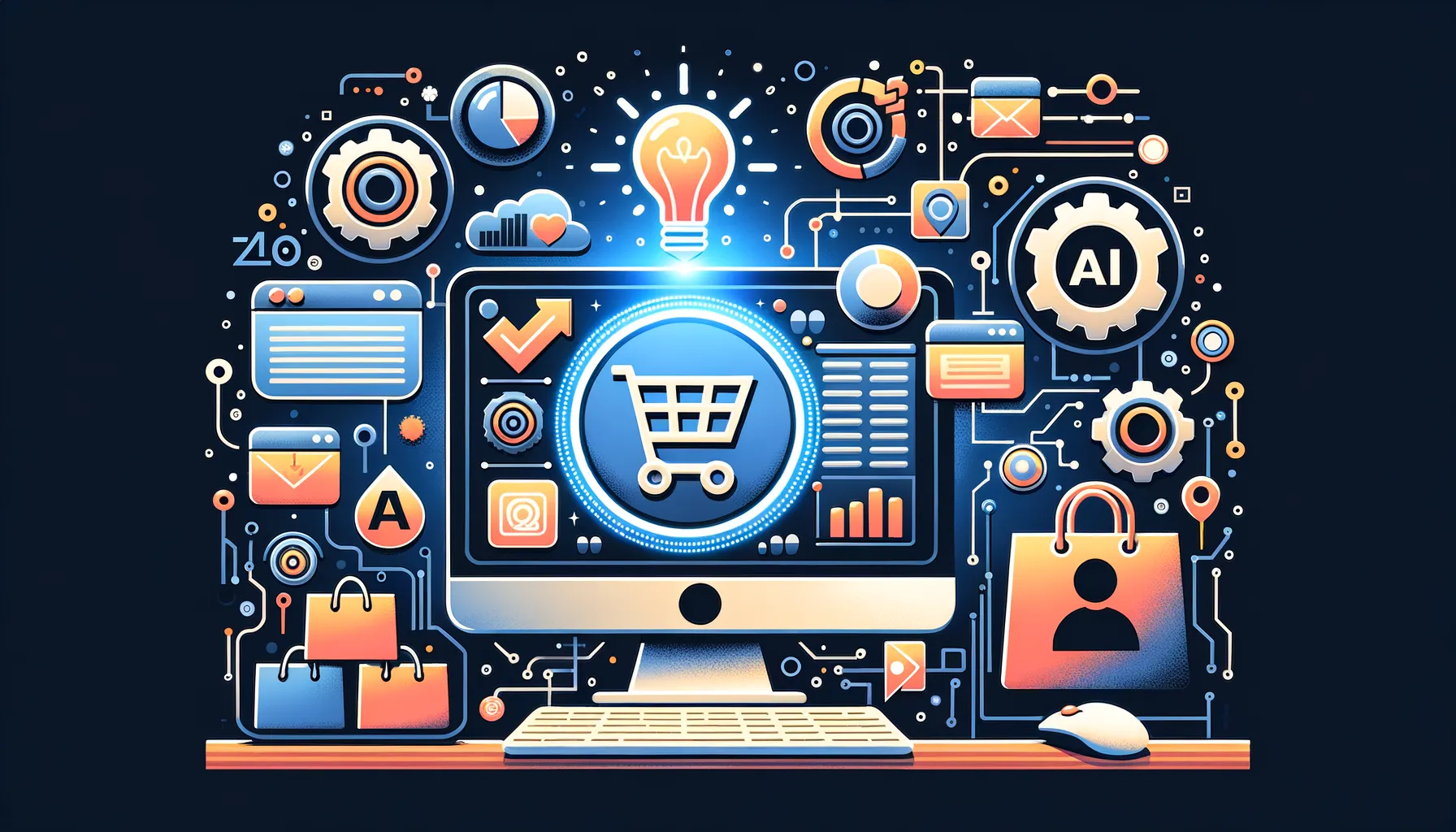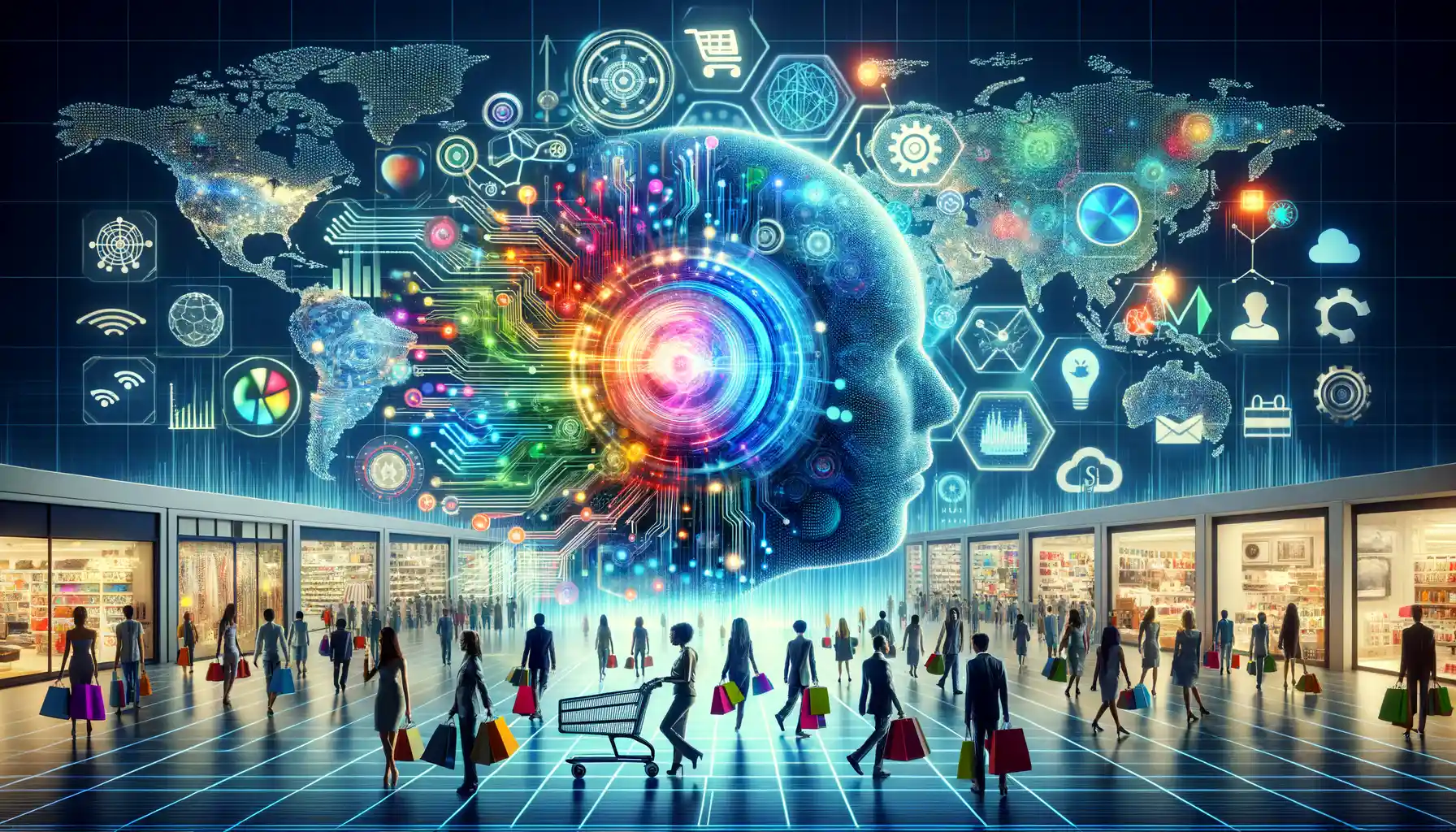Introduction to AI in E-Commerce
Revolutionizing the Shopping Experience
Imagine walking into your favorite store where every item feels handpicked just for you. That’s exactly what AI is doing in the world of e-commerce—tailoring experiences that feel almost magical. Think of it as your personal shopping assistant that never sleeps. By analyzing mountains of data, AI deciphers your preferences, predicting what you’ll love before you even know it yourself.
But how does it work behind the scenes? E-commerce platforms use AI to power everything from personalized recommendations to dynamic pricing. When you browse, AI is busy connecting dots—your search history, clicks, and even the items left in your cart. The result? A seamless journey that makes online shopping addictively convenient.
- Visual search: See a dress in a photo? AI can help you find it in seconds.
- Chatbots: These conversational helpers answer your questions—and they’re getting scarily good at it.
With AI in the driver’s seat, every scroll, click, and purchase becomes part of a larger story tailored directly to you. It’s not just shopping; it’s an experience reimagined. And truthfully? We’re only scratching the surface.
Smarter Decisions, Faster Actions
Here’s the thing about AI—it doesn’t just cater to shoppers; it transforms how businesses operate too. Picture this: instead of guessing which products to stock or when to offer discounts, companies now rely on AI’s razor-sharp insights. Real-time data analysis helps e-commerce giants forecast demand, reduce waste, and optimize inventory management like never before.
For example, with tools powered by AI, small businesses no longer have to play the guessing game. Algorithms analyze sales patterns and market trends in microseconds, answering key questions: “Will this product trend tomorrow?” or “Should I invest in more inventory now?”
And the magic doesn’t stop there. By using machine learning, even backend systems—a usually neglected hero—get smarter. Whether it’s fraud detection or streamlining logistics, AI thrives on solving endless problems quickly and efficiently. Let’s face it: in the fierce e-commerce competition, that kind of intelligence isn’t just helpful—it’s game-changing.
Impact of AI on E-Commerce App Development

How AI Transforms E-Commerce Development
Imagine stepping into a store where every shelf is stocked with items you love, the sales assistants know your name, and checkout takes seconds. That’s exactly what AI-driven e-commerce apps are bringing to digital shopping! These apps aren’t just tools; they’re shaping how businesses connect with their customers in truly remarkable ways.
AI makes the development of these apps more advanced and intuitive, especially in areas like:
- Chatbots: Picture your favorite retailer having a 24/7 assistant that never tires and answers with precision—chatbots do just that.
- Dynamic pricing: Forget static price tags! AI ensures prices move like tides, adjusting based on demand, trends, and even customer loyalty.
Developers today can also leverage natural language processing (NLP) to make search bars smarter and customer service conversations smoother. The result? Apps that think, adapt, and learn alongside their users. Imagine an app that remembers what you loved last Black Friday or predicts when you’ll run low on your favorite products.
By embedding AI into their apps, brands aren’t just keeping up—they’re breaking new ground in meaningful customer connections.
AI-Driven Personalization in User Experience

Transforming Shopping Into a Tailored Experience
Imagine this: you open an e-commerce app, and it feels like it already knows you. It recommends the perfect jacket for the chilly weather in your city, suggests a skincare product because it knows you’re running low, and even curates a playlist for a cozy night in. Magic? Not quite. This is the power of AI-driven personalization.
AI doesn’t simply “guess”—it listens, learns, and evolves with every click, swipe, and scroll. By analyzing user behavior and preferences, AI crafts experiences that are uniquely yours. It’s like having a personal shopper who never sleeps.
Here’s how it works for users:
- Smart Recommendations: Products tailored to your style, size, and needs, making endless browsing a thing of the past.
- Real-Time Adaptation: Spot a sale or trending item? AI adjusts content instantly to highlight what matters most to you.
At its core, AI isn’t just smart—it’s intuitive. Every touchpoint becomes an opportunity to surprise and delight. And let’s be honest, isn’t it nice to feel seen—even by an algorithm?
The Role of Machine Learning in Optimizing Operations

Transforming Chaos into Smooth Workflows
Picture this: your e-commerce business is like a bustling marketplace, with carts flying, inventory moving, and customers demanding lightning-fast service. Enter machine learning, your secret weapon to untangle the chaos and create systems that run like clockwork.
How does it work? Machine learning thrives on patterns. It studies your operations—every order, shipment, and stock update—and starts connecting dots faster than any human could. The result? A finely tuned operation where no item goes out of stock unexpectedly, delivery routes are optimized to save hours, and unnecessary downtime becomes a relic of the past.
Here’s the kicker: algorithms learn continuously. They adapt, predict, and recommend improvements in real-time, ensuring your operations evolve as your business grows. Imagine an AI-powered assistant suggesting the exact product restocking you need based on trends and demand spikes. That’s more than efficiency; that’s a profit-boosting crystal ball.
Key Benefits for E-Commerce Hustlers
- Demand forecasting: Say goodbye to overstocking or understocking nightmares.
- Smart pricing adjustments: Tailored pricing strategies maximize revenue effortlessly.
- Logistics optimization: Reduce delays and shipping costs with intelligent route mapping.
With machine learning, you’re not just running a business—you’re orchestrating a symphony of efficiency. Let the algorithms handle the heavy lifting so you can focus on growth and customer delight.
Future Trends and Innovations in AI for E-Commerce

The Dawn of Hyper-Personalized Shopping
Picture this: you open your favorite e-commerce app, and it feels like walking into your dream boutique. That’s where AI is heading. Future innovations in AI for e-commerce are all about delivering hyper-personalized experiences that don’t just predict your preferences—they *feel* like magic.
Imagine browsing, and AI whispers, “Hey, that jacket you checked out last week? It’s on sale, and we found sneakers to match.” This level of personalization will soon go beyond just shopping history. Advanced algorithms will analyze your mood (yes, your mood!) through tone in voice searches or even micro-expressions on video platforms.
What’s next? AI may design virtual fitting rooms that tailor clothes to your unique proportions in real-time or suggest skincare products based on your environment’s humidity. The possibilities are endless—and surprisingly intimate.
- Visual search: Snap a photo of something you love, and the app instantly finds similar items.
- Voice shopping companions: Conversational AI will act like your personal shopper, chatting with you, answering questions, and streamlining purchases.
AI That Anticipates, Not Just Reacts
Here’s an interesting twist: future AI in e-commerce won’t just wait for customers to act—it’ll *anticipate* their needs before they even know what they want. Think of it as your intuitive shopping buddy, always one step ahead.
For example, machine learning models will study trends across millions of shoppers and alert you when a product you’re likely to love is about to sell out (like those limited-edition sneakers). Or how about receiving personalized restock notifications for products you’ve forgotten you needed? These systems will act like your shopping guardian angel.
And let’s not forget the power of prediction in inventory. Retailers will use AI to foresee demand shifts, ensuring shelves aren’t empty during peak seasons or overstocked with unsold items. It’s smart, strategic, and sustainable—a win for everyone.
